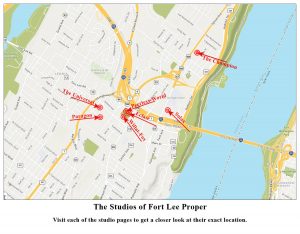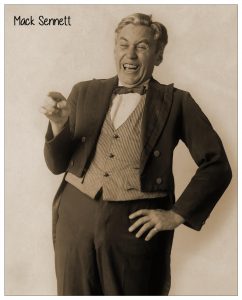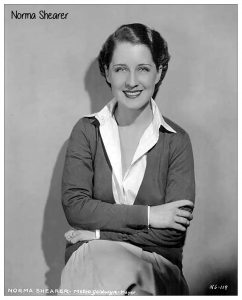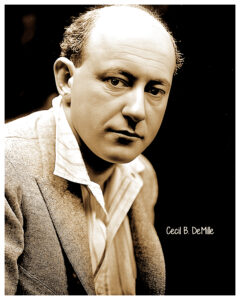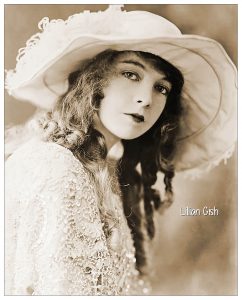Before they moved to Hollywood, they moved to
Fort Lee, America's First Film Town
The Studios of Fort Lee and all of New Jersey
The Original Movie Enclave
When Mark Dintenfass built his Champion Studio in Fort Lee, movie makers had been shooting in and around Fort Lee and the Palisades for several years. Thomas Edison built the nation's first movie studio just a short distance away in West Orange. Attracted by the splendor of forests, streams, farmland, and quaint streets, film makers found the relative closeness of Fort Lee to the New York movie companies convenient, just a short picturesque ferry ride across the Hudson.
It was inevitable that movie people would begin to settle here. Fort Lee had everything the budding movie industry needed to succeed: low rents, free run of the streets, a town of extras willing to work for free, and lots of open spaces. As well, at least for a short period of time, it provided a buffer against the detectives hired by Thomas Edison looking for movie makers who were violating Edison's patents on cameras and projectors. This stranglehold forced movie makers to scatter out of New York and shoot on the run everywhere in the country. Fort Lee was where many of them settled to build their businesses.
The Fort Lee movie enclave was a true factory town.The streets were lined with studios and populated with producers, directors and stars....and lots of extras just yearning to be in a movie.
Though nearly forgotten by film history and though Fort Lee's time in the spotlight was all too short, lasting about a decade (and each studios lifespan was but a few years), its importance to the industry cannot be understated. It pioneered the big studio and indoor shooting concept, it consolidated an industry in a tight area so efficiencies of economy and personnel could be used. It spawned related businesses and offered services that were geared to the movie makers. It was literally the Detroit of the early movie business.
The first studio was built in 1910 and the area experienced a building frenzy. However, after WWI production fell off due to several factors. Fuel shortages made transportation across the Hudson from New York difficult. An influenza outbreak shut down the studios for a period of time. The local population began to tire of the "movies" as they called the film people. Production slowed as the business began to migrate to ever sunny Hollywood building new, bigger studios there. Fires and explosions at the movie studios and processing labs caused the populace to live in constant fear. They were basically legislated out, to the chagrin of those Fort Lee citizens whose livelihood depended on the movies and the money it brought to town.
By the mid 1920s the studios had closed. Several of the remaining studios burned down because their construction was substandard. Instead of movie production, their remaining labs lived on in a new life. Fort Lee had transitioned from a movie production town into a film lab town where negatives were processed into finished prints ready for distribution and exhibition. But for a couple of brief exceptions, movie making was relegated to Fort Lee's distant memory.
Fort Lee experienced a meteoric rise and a slow decline into the recesses of history. The movie industry in Fort Lee was allowed to die due entirely to neglect of the tremendous asset it owned. Had city fathers, had studio builders and owners, had the movie industry in general, had the citizens of Fort Lee been better stewards and understood what Fort Lee's potential was, had the studios been built with superior construction quality and fire protection, there might never have been a Hollywood. But that is just hindsight and opinion on my part.
The Fort Lee Film Commission is doing its best to keep the memory of Fort Lee alive. Visit their web site.
More Reading:
The Studios of Fort Lee and New Jersey
Click a link to go to that page.
Other Fort Lee Producers and Companies
Many producers and companies did not have a studio base,
but rented them on an "as needed" basis.
- Lewis J. Selznick
- Famous Players-Lasky
- Eclectic Films
- Metro Pictures
- Samuel Goldwyn
- Consolidated Film Laboratories (CFI)
- Prizma Color
- Jester Comedies
- Creation Company
- Leah Baird
- Whitman Features Co.
- New York Motion Picture Co.
- Ramo Films
- Life Photo Films
- Reliance
- Century Studio
- American Méliès (Star Films)
- Victor Studios
- Cello Film Company (see Centaur Film Co.)
- Clara Kimble Young
- Producers Service Studios
- United States Photoplay Co.-Grantwood
- B. Herbert Milligan
- American Mutoscope and Biograph, Hoboken, NJ
- Vim Comedies (See Centaur Film Co.)
- Diamont Studio
- Metropolitan Sound Studio
Many of the industry's biggest stars and directors worked in Fort Lee
When the first Fort Lee studio opened many of its players were already well known. Others who came through Fort Lee started playing bit parts and would become stars later in their careers. By the time Fort Lee's time had passed many famous actors and directors had worked here, and some lived here, as well.
The list of the famous who worked in Fort Lee is a Whose-Who of Movie Elite.. Among those names were John Barrymore, Mary Pickford, Rudolph Valentino, Mary Astor, Theda Bara, Raoul Walsh, Roscoe Arbuckle, Mack Sennett, D.W. Griffith, Norma Shearer, Adolphe Menjou, and Lillian Gish. Some were already stars, some were aspirants. All were the biggest of their day.
Key Dates in the History of the
Fort Lee and New Jersey Studios
- 1893 Edison builds Black Maria, the nation's first studio, in West Orange
- 1898 Biograph Company shoots Fort Lee's first ever movie
- 1901 Edison leaves his /black Maria behind setting up a rooftop studio in New York. Edison is owner in name only leaving film production to others
- 1907 New Jersey's second studio, Centaur Film Company, set up in Bayonne under the ownership of David Horsley
- 1907 Kalem began shooting in and around Fort Lee and Bergen County
- 1908 Legendary director DW Griffith brings his Bioggraph company to shoot in Fort Lee
- 1910 Mark Dintenfass builds the first studio in Fort Lee, Champion Studio
- 1910 Pathé relocates to Jersey City from NYC after their studio burns down
- 1911Éclair is the next company to build a studio
- 1911 Herbert Blaché builds Solax
- 1911 David Horsley abandons his Centaur studio in Bayonne becoming a central figure in Hollywood history, building Hollywood's very first studio, the Nestor Studio
- 1912 Champion becomes part of a merger of several small companies into what would become Universal Pictures. The studio produces under the Universal banner
- 1913 Kalem shut its NY studio and builds a open air stage at 199 Palasaides Ave. in Cliffside at the site of the old Laird Estate
- 1914 Éclair lab burns down but stage survives. Éclair ends foray into Fort Lee production focusing on western studios (location unknown)
- 1914 "Doc" Willat builds a large studio at Linwood and Main. Almost immediately sells his interest to Chas. Bauman and Adam Kessel of New York Motion Picture Corp.. Wilatt Studio name is retained
- 1914 Willat Studio is almost immediately leased to William Fox
- 1914 Samuel Goldwyn makes his Fort Lee debut with World Film Company
- 1914 Lewis J. Selznick sets up Select Picture Company releasing through World Film
- 1914 Jules Brulatour builds Peerless Studio which is financed and controlled Charles Jourjon, president of the Éclair, next to Willat and Fox
- 1914 World Film buys Peerless Studio renaming the property Peerless-World Studio with Selznick at the helm
- 1914 World's neighbor, William Fox expands production to the World lot
- 1915 Triangle Film Corp moves into the Willat Studio alongside Fox
- 1915 Universal built by Carl Laemmle, Fort Lee's largest at the time, to supplement Universal City in California built earlier in the year
- 1915 Kalem adds to its facility by building a proper studio along side its open air stage. They continue to maintain studios in NY, Jacksonville, Hollywood, and Glendale.
- 1915 Famous actor E.K. Lincoln (not to be confused with Elmo Lincoln) builds a studio to produce his films. Instead he rents it out to others
- 1916 Lewis Selznick leaves World taking its biggest star, Clara Kimball Young, leases the Solax Studio
- 1916 Paragon Studio built by Jules Brulatour. The largest at the time it covered 5 acres. Merged into Peerless-World
- 1916 Kalem ceases production in Cliffside and the lot goes on the rental market. They maintain their lease until 1921
- 1916-17 Fox leases the E.K. Lincoln Studio
- 1916 Ideal Studios built by W.I. Cherry and immediately leased on a 5 year basis by Herbert Brenon. Operated as Brenon-Ideal
- 1916 Astra Film moves into the Pathé studio after Pathé abandons the east coast for California
- 1917 Benjamin Chapin builds a tiny studio in his home backyard to produce a series of shorts about Abraham Lincoln starring himself
- 1917 Laemmle closes the Universal and Champion lots to consolidate production in California
- 1917 Samuel Goldwyn leases the Solax studio but soon left for the larger Universal plant
- 1917 Carl Laemmle transfers ownership of Universal (the Universal and the Champion) to the Motion Picture Realty Company
- 1917 Pathé becomes a Solax tenant
- 1917 Herbert Brenon buys Ideal Studios outright
- Lewis J. Selznick partners with Adolph Zukor (future Paramount) in Select Pictures Corp.
- 1917 Famous Players-Lasky (Adolph Zukor) leases Paragon Studio to make Paramount films. Plant renamed for its new tenant. They remain until Paramount's new studio in Astoria is completed in 1920
- 1918 Benjamin Chapin suddenly dies at age 45. His studio, obviously, closes
- 1918 Goldwyn leaves Fort Lee for California
- 1918 Famous Players-Lasky )the precursor to Paramount) leases both Universal and Solax
- 1918 the E.K. Lincoln transforms a portion of the studio as the areas largest film lab
- 1919 Fox abandons the Willat lot building a new modern studio in NYC but continues to lease the Éclair studio until 1921
- 1919 World folds in an involuntary bankruptcy
- 1919 Solax burns to the ground
- 1919 Lewis Selznick, as an independent, lease the shuttered Universal lot
- 1919 Selznick buys out Zukor's interest in Select and buys Peerless-World Studio becoming the east's largest producer. Effectively drops the Select name and combines his activities with his son, Myron's, activities as Zelznick Picture Corp.
- 1919 Creation Company buys Kalem Studio (presumably the buildings, not the land)
- 1919 Dec. 20 fire ignites and destroys the film lab at Solax
- 1919 Selznick moves into Universal until 1921
- 1920 after repairs at Solax Robertson-Cole takes up residency and Selznick becomes a tenant.
- 1920 Selznick leases Paragon after Paramount relocated to Astoria. He liquidates his California and New York holdings deciding to concentrate activities in Fort Lee. Selznick now controls most of Fort Lee's production facilities
- 1921 Fire destroys most of the buildings at the Kalem studio
- 1921 Astra Film leaves the Pathé lot for greener pastures in Glendale, CA
- 1922 Selznick leaves Fort Lee
- 1922 all the studios in Fort Lee proper were abandoned except Solax who was producing cartoons
- 1923 Lewis J. Selznick declares bankruptcy succumbing to post war economics and stiff competition from larger movie producers. Sons Myron and David relocate to California
- 1923 Inspiration Pictures leases Universal
- 1924 CFI lease Solax for its lab operation
- 1924 Fire at Universal destroys prints and negatives. Loses huge. Production continues
- 1925 Willat-Fox lot, operating as National-Evans Film Lab, burned down
- 1925 Local Fort Lee businessmen reopen Peerless-World by taking on its debt. Organizes as Fort Lee Studios, Inc.
- 1926-27 Production in Fort Lee proper grinds to a halt. Some production continues at some of the other Bergen County studios
- 1927 Second explosion and fire at the film vault of Cello Film Corp., a lessee at Universal, film vault fire destroys more prints and negatives
- 1928 Current owner of the Ideal Studio, O.W. Biarmer, retools the studio for sound. In 1929 a major fire at Pathé forces new, stricter fire regulations on the movie industry. Many small studios were forced to close or relocate. Ideal took on several productions
- 1928 the old Peerless-World studio, which had been seized by the city for back taxes, began a reconstruction as Metropolitan Sound Studios. Phil Goldstone, a low budget producer from California, took ownership
- 1929 CFI-Solax stage burns down
- 1930 business losses forces Carl Laemmle of Universal to borrow money from CFI who takes over the facility and operates it as a film lab
- 1931 CFI buys the Solax lot
- 1931 E.K. Lincoln studio transformed into a sound studio with the help of RCA
- 1932 CFI buys the abandoned Pathé studio to expand its film laboratory holdings in the area
- 1933 Bud Pollard takes over E.K. Lincoln to and renamed it Royal Studio to make his low budget talkies (mostly in Yiddish)
- 1935 E.K. Lincoln bought by J. Bergi Contner and renamed Producer Service Studio
- 1947 Metropolitan taken over and renamed Gateway Productions
- 1948 Oscar Micheaux takes briefly takes over Metropolitan
- 1949 Bonded Film Storage buys the Solax lot from CFI
- 1952 Paragon, now a theatrical and TV scene storage facility, catches fire.
- 1953 Ideal studio burns down
- 1963 Most of the original Universal building torn down. CFI expansions remain
- 1965 The remains of the Solax studio razed to make way for a grocery store
- 2002 Remaining building on the Universal/CFI lot razed
- 2016 The buildings at the original studio, Champion, are torn down after many years of a preservation attempt
- Current: the only remaining evidence of film production in and around Fort Lee are a building at the Paragon lot, which is now an office building, and the studio of Pathé also transformed for general business use. Fort Lee movie production has disappeared




